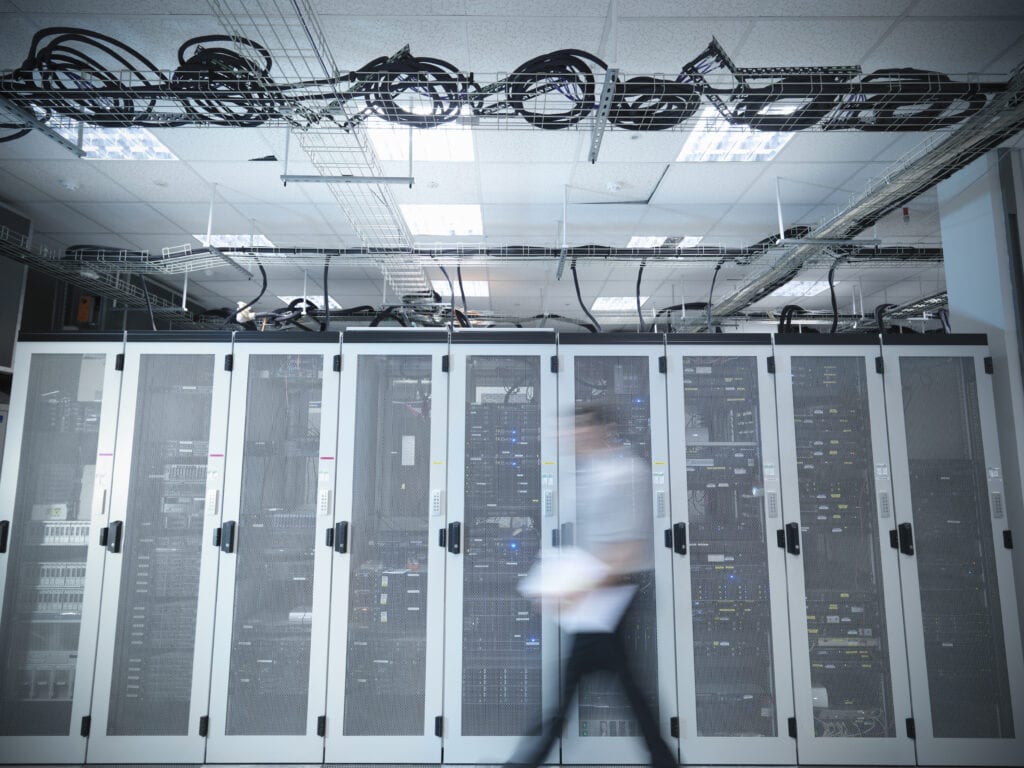As big data centers (>10MW of IT) continuously investigate how to optimize cost, simplify operations and develop continuity of services, the IEC 61850 Global communication standard has been studied and implemented by some to manage the protection, monitoring, and control of their large and more complex electrical systems, especially at the Medium Voltage (MV) level.
IEC 61850 is not a new standard and has proven for 20+ years its capacity for reliability and high performance in designing, building, operating, evolving, and duplicating huge electrical distribution networks. It also introduces advanced functionalities to optimize and maintain continuity of service. However, it is only been recently that it has been deployed in the data center environment.
Technical Study Comparison
For this reason, Schneider Electric Engineering has performed a technical study to compare two automation and control solutions for the same electrical design with the same performance and sequence of operation requests:
- Traditional solution using Modbus TCP coupled with PLC and SCADA system
- IEC 61850 standard-based solution using the full suite of capabilities and software
Data Center Design Assumptions Utilized
In order to make a fair and realistic comparison according to typical requirements for this large data center market segment, we have used the following assumptions for the data center design:
- Large capacity data center starting at 10 MW of IT / 15 MVA power range at the utility connection
- MV distribution includes 2 utility connections for redundancy and a 2N topology with no Single Point of Failure (SPOF)
- Back-up generation plant is centralized at MV level
- MV topology mixes both radial distribution and a closed loop to minimize backup generation costs (capex and opex)
As a consequence of these choices, the electrical operation requires advanced protection systems (e.g. differential protection) that are also specified, a dedicated redundant communication network (LAN), advanced protections relays, and so on…
We also make the assumption that the data center design will be standardized as a reference architecture and used for multiple deployments in different locations. This means that only local standard adaptation will be done to be compliant to follow local rules when doing detailed design and installation.
Hence, it is expected that mock-up and tests of the protection system will be held to validate reliability and sustainability of the system thru various sequences of operation and configuration description before any actual deployments. These will also be used to contribute to the training of the people who will operate the data center once deployed. These assumptions were used as the basis for Schneider Electric data center reference design, RD107. We used this design as the basis for this comparison study.
Access Reference Design RD107 now >
3 advantages of IEC 61850 adoption
The study shows – within the conditions described above – that IEC 61850 offers many advantages and even increases system performance when advanced protection and control functions are required. The main benefits for large data center applications include:
- IEC 61850 standard offers significant savings when implementing, testing and commissioning the solution, thanks to the engineering tools that “digitalize” the process while avoiding most human errors, time for wiring, as well as validating hardware settings.
- IEC 61850 standard requires more initial work upfront during the design stage. This can be seen as initial additional time or being slightly more costly during the engineering phase. However, it will be quickly amortized by the commissioning, when evolving/changing/updating the system, and when deploying two or more equivalent data centers in different locations (i.e., step and repeating the same design).
- During life cycle: either for real time operation, to train new people or to ensure Cybersecurity, drastically reduce risks with the evolution of the complete system with new installation of electrical equipment or during replacement/retrofit.
Additional benefits to using IEC 61850
IEC 61850 standard also offers the capability to integrate advanced features that could be interesting to apply to new energy demand-response applications to optimize peak energy usage or get more “off-grid” and renewable sources of power. It will also introduce an evolution of its features and performance in future, upcoming releases of the standard.
Generally speaking, IEC 61850 standard is “digital ready” starting at the design phase. This enables software to develop the “design-build-commission-operate and maintain” the lifecycle of large and complex electrical distribution networks. All while enhancing functionalities to meet the evolution of the energy market as well as the cloud & service providers’ requirements.
To read more about the study and to have a better understanding of the results, please check out our new white paper Comparing IEC 61850 vs. Traditional Monitoring, Protection and Control Solutions in Large Data Centers.



